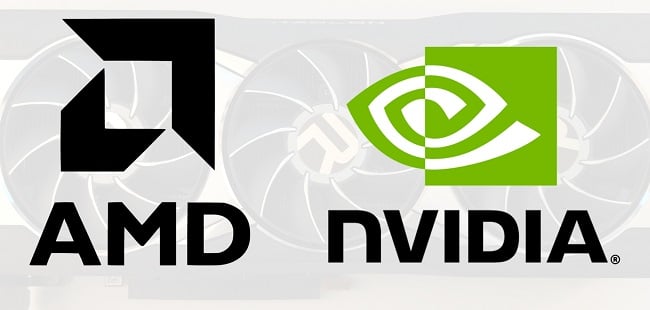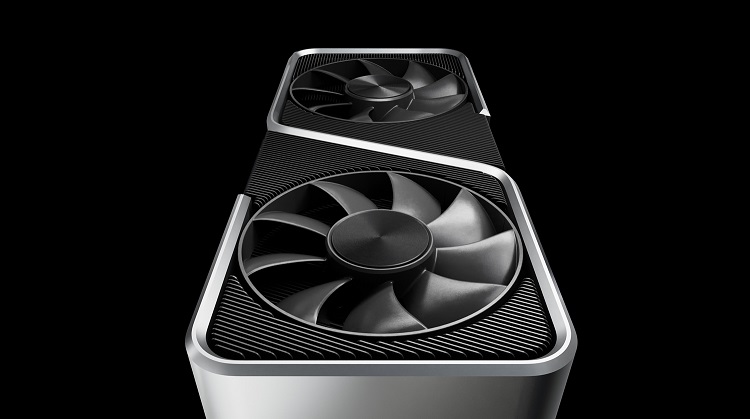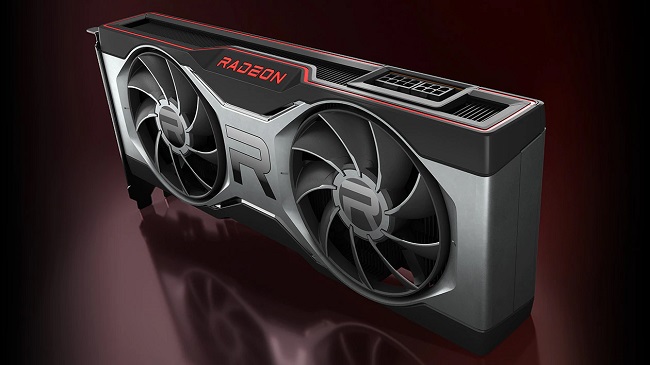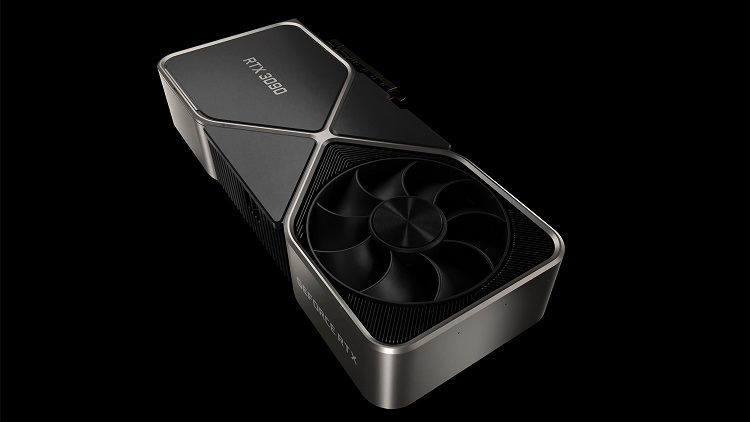AMD and Nvidia are two of the staunchest opponents in computing.
Having survived the royal-rumble-like 1990s of graphics card manufacturing, these two industry titans were for many years the only two options when it came to PC graphics. Though Intel is looking to play third-wheel later in 2022, AMD and Nvidia are likely to remain the two most popular and viable solutions to graphics cards for gaming for years to come.
They remain hotly competitive with one another, too. Despite Nvidia having a much greater market share overall, and AMD’s past generations of cards failing to provide credible competition at the very top end of GPU performance, the latest generations trade blows in almost every respect.
If you want a graphics card in 2022, AMD and Nvidia have a solution for you, whatever your budget. This makes for some intriguing head to heads amongst graphics cards, and a plethora of choices for anyone looking to upgrade their gaming experience.
AMD vs Nvidia – The Latest Generations

AMD and Nvidia may have been the two major options for graphics cards for over two decades, but they haven’t always been viable alternatives to one another.
Only going back two generations to Nvidia’s GTX 10-series GPUs, the 1080 Ti was a standout graphics card that easily beat out AMD’s top-of-the-line Vega 56 and 64 graphics cards, leaving no credible competition at the top end.
Add to that, AMD’s GPUs ran hotter and were more power-hungry than Nvidia’s best GPUs. This made them much less enticing options for prospective GPU buyers, especially at the top end.
Then the RTX 2000 series from Nvidia introduced ray tracing. And though AMD’s RX 5000 graphics cards using the first-generation RDNA architecture offered big improvements in performance per watt, with greater efficiency than anything AMD had managed before, they still couldn’t catch the top-tier RTX 2080, or 2080 Ti GPUs.
AMD also didn’t offer anything in the way of ray tracing acceleration, or dynamic upscaling. This left Nvidia alone to offer hardware-accelerated ray tracing support with its RT cores, and deep learning super sampling (DLSS) with its Tensor cores.
Those features weren’t as important then as they are now, but over that generation’s lifespan, the lack of these features on AMD hardware began to stand out.
However, that all changed with the launch of the new generation Nvidia RTX 3000 and AMD RX 6000 graphics cards in 2020.
With it, Nvidia massively increased performance over the previous generation of RTX 2000 GPUs, with its new Ampere architecture boosting CUDA core counts significantly, as well as using much faster GDDR6X memory. It also introduced a third generation of Tensor cores and a second generation of RT cores. Each of which offered significantly improved performance over their predecessors.
AMD Stepped Their Game Up
AMD’s response was arguably more impressive.
It again made major leaps in performance per Watt with the launch of its RX 6000 RDNA 2 graphics cards. But, where that meant competition at the mid-range for RDNA, RDNA 2 enjoyed a much wider product stack and therefore much greater competition throughout the price to performance spectrum.
Just as important, however, was the introduction of AMD’s ray accelerators.
They aren’t dedicated hardware like Nvidia’s RT cores, but instead introduced changes to its compute unit that allow for the acceleration of ray tracing calculations, as well as applying a de-noising effect to scenes with ray-traced lighting applied. Although AMD’s solution isn’t as powerful as Nvidia’s, the ray accelerators are enough to support ray tracing in compatible games, bringing AMD and Nvidia GPUs to feature parity.
In 2021, AMD also introduced FidelityFX Super Resolution, and more recently, Radeon Super Resolution. These dynamic upscaling solutions provide a big uplift in frame rates in compatible games, without compromising visual fidelity too much.
Although arguably not as nuanced, or as visually impressive as Nvidia’s DLSS, FSR and RSR make it possible for AMD gamers to improve performance dramatically in a similar manner. That again, makes the feature difference between Nvidia and AMD graphics cards far less stark this generation.
Entry-Level GPUs

Although AMD and Nvidia may have launched their new-generation graphics cards with the most high-end models, they would later go on to launch much more modest versions of their RX 6000 and RTX 3000 graphics cards.
These provide much more affordable solutions for those looking to play games or upgrade their older systems, to new generation hardware.
| Nvidia RTX 3060 | Nvidia RTX 3050 | Nvidia RTX 2060 | Nvidia GTX 1660 | Nvidia GTX 1650 | AMD RX 6600 | AMD RX 6500 XT | |
|---|---|---|---|---|---|---|---|
| Architecture | Turing | Turing | Turing | Turing | Turing | RDNA 2 | RDNA 2 |
| Process node | Samsung 8nm | Samsung 8nm | Samsung 8nm | Samsung 8nm | TSMC 12nm | TSMC 7nm | TSMC 7nm |
| Shader processors | 3584 CUDA cores | 2560 CUDA cores | 1920 CUDA cores | 1408 CUDA cores | 896 CUDA cores | 1792 Stream processors | 1024 Stream processors |
| Ray tracing accelerators | 28 RT cores (2nd gen) | 20 RT cores (2nd gen) | 30 RT cores (1st gen) | N/A | N/A | 28 Ray accelerators | 16 Ray accelerators |
| Tensor cores | 112 (3rd gen) | 80 (3rd gen) | 240 (1st gen) | N/A | N/A | N/A | N/A |
| Base clock | 1320MHz | 1550MHz | 1365MHz | 1530MHz | 1485MHz | 1626MHz | 2310MHz |
| Game clock | N/A | N/A | N/A | N/A | N/A | 2044MHz | 2610MHz |
| Boost clock | 1777MHz | 1750MHz | 1680MHz | 1785MHz | 1665MHz | 2491MHz | 2815MHz |
| Memory | 12GB GDDR6 | 8GB GDDR6 | 6GB GDDR6 | 6GB GDDR5 | 4GB GDDR5 | 8GB GDDR6 | 4GB GDDR6 |
| Memory speed | 15Gbps | 14Gbps | 14Gbps | 8Gbps | 8Gbps | 14Gbps | 18Gbps |
| Memory bus | 192-bit | 128-bit | 192-bit | 192-bit | 128-bit | 128-bit | 64-bit |
| Bandwidth | 360GBps | 224GBps | 336GBps | 192GBps | 128GBps | 224GBps | 144GBps |
| TDP | 170W | 130W | 160W | 120W | 75W | 132W | 107W |
A Variety of Generations to Choose From
The entry-level GPU marketplace in 2022 is arguably the most intriguing, as it spans three distinct generations of graphics cards on the Nvidia side, but really only encapsulates the latest one for AMD.
That’s not because AMD wasn’t competitive in previous generations, but because the general global GPU shortage has meant that Nvidia has kept some of its previous-generation GPUs around for much longer than expected.
That’s even led to it re-releasing new versions of those older cards with reconfigured memory. And there are both Super and Ti variants of some of the older cards that are still kicking around too, but we’re only looking at the standard models here to keep things relatively simple.
Although there are various memory configurations, and support for ray tracing and DLSS is peppered throughout these cards, there is a general ranking in overall performance.
It runs as follows:
- GTX 1650
- RX 6500 XT
- GTX 1660
- RTX 2060
- RTX 3050
- RX 6600
- RTX 3060
Best for 1080p Gameplay
All of these cards are only really designed to play games at 1080p. Although you will get far greater frame rates and support for higher detail settings with the higher-end cards.
Ray tracing is supported by all RTX and RX 6000 GPUs. But, it’s not particularly viable on the RTX 2060 nor the RX 6500 XT and 6600. This is because they simply don’t have the ray tracing acceleration necessary for enabling it not to tank frame rates in supporting games.
It’s enough to see what the feature looks like, or in games where its implementation is extremely light or very well optimized, the option is there. But, for the most part, ray tracing isn’t a feature that 1080p graphics cards are designed to take full advantage of.
Both AMD and Nvidia offer some effective graphics cards for entry-level gaming, although Nvidia certainly has more choice.
If you’re just looking to play esports games and don’t mind lower detail settings, the GTX 1650 and RX 6500 XT are perfectly usable graphics cards, but you’ll get a lot more for your money at the GTX 1660 and above level. The RTX 3060 and RX 6600, in particular, offer true new-generation performance.
The other cards are great for playing older games, but are showing their age and don’t benefit from the latest and greatest features in the same way.
Mid-Range GPUs

The mid-range is where AMD and Nvidia’s graphics cards get a lot more capable, offering both more and faster memory, a much greater number of shader cores, and much-improved support for higher resolutions and ray tracing.
They might be more expensive, but if you want to play AAA games at high detail settings and resolutions, then you’ll need to start here.
| Nvidia RTX 3070 | Nvidia RTX 3060 Ti | AMD RX 6700 XT | AMD RX 6600 XT | |
|---|---|---|---|---|
| Architecture | Turing | Turing | RDNA 2 | RDNA 2 |
| Process node | Samsung 8nm | Samsung 8nm | TSMC 7nm | TSMC 7nm |
| Shader processors | 5888 CUDA cores | 4864 CUDA cores | 2560 Stream processors | 2048 Stream processors |
| Ray tracing accelerators | 46 RT cores (2nd gen) | 38 RT cores (2nd gen) | 40 Ray accelerators | 32 Ray accelerators |
| Tensor cores | 184 (3rd gen) | 152 (3rd gen) | N/A | N/A |
| Base clock | 1500MHz | 1410MHz | 2321MHz | 1968MHz |
| Game clock | N/A | N/A | 25424MHz | 2359MHz |
| Boost clock | 1725MHz | 1665MHz | 2581MHz | 2589MHz |
| Memory | 8GB GDDR6 | 8GB GDDR6 | 12GB GDDR6 | 8GB GDDR6 |
| Memory speed | 14Gbps | 14Gbps | 16Gbps | 16Gbps |
| Memory bus | 256-bit | 256-bit | 192-bit | 128-bit |
| Bandwidth | 448GBps | 448GBps | 384GBps | 256GBps |
| TDP | 220W | 200W | 230W | 160W |
Best for 1440p Gameplay
The Nvidia RTX 3070 is the king of this pile of cards, beating out the still-swift RX 6700 XT in most games and benchmarks by a few percentage points, and most notably eclipsing the last-generation GPU king: the RTX 2080 Ti.
The RTX 3070 is a 1440p graphics card that can do 4K gaming in some cases, even if its frame rates and detail settings might not be too high. The others in this section, however, are decidedly 1440p cards, and arguably at the lower end, high-detail and high frame rate 1080p cards.
Still, they can all handle ray tracing well enough that it’s something you can enable without fear of it degrading your frame rate to unplayable levels. Though the Nvidia cards can enjoy higher frame rates with it enabled, DLSS provides a much-needed boost in games that support both. FSR can help AMD’s cards too, but it’s not quite as capable.
There is the potential for the RX 6700 XT to be the better future-proofed card for longer, though, as its 12GB of GDDR6 memory potentially gives it more headroom for higher-end visual settings in upcoming games. The infinity cache used on the AMD cards also gives it a bandwidth advantage in some scenarios too, helping them punch above their weight in some cases.
High-End GPUs

The top tier graphics cards of any generation are exciting to behold and play around with. But that goes doubly so for this generation, where both AMD and Nvidia have released staggeringly powerful cards worthy of the most performative gaming PCs.
| Nvidia RTX 3090 | Nvidia RTX 3080 Ti | Nvidia RTX 3080 | Nvidia RTX 3070 Ti | AMD RX 6900XT | AMD RX 6800 XT | AMD RX 6800 | |
|---|---|---|---|---|---|---|---|
| Architecture | Turing | Turing | Turing | Turing | RDNA 2 | RDNA 2 | RDNA 2 |
| Process node | Samsung 8nm | Samsung 8nm | Samsung 8nm | Samsung 8nm | TSMC 7nm | TSMC 7nm | TSMC 7nm |
| Shader processors | 10496 CUDA cores | 10240 CUDA cores | 8704 CUDA cores | 6144 CUDA cores | 5120 Stream processors | 4608 Stream processors | 3840 Stream processors |
| Ray tracing accelerators | 82 RT cores (2nd gen) | 80 RT cores (2nd gen) | 68 RT cores (2nd gen) | 48 RT cores (2nd gen) | 80 Ray accelerators | 72 Ray accelerators | 60 Ray acclerators |
| Tensor cores | 328 (3rd gen) | 320 (3rd gen) | 272 (3rd gen) | 192 (3rd gen) | N/A | N/A | N/A |
| Base clock | 1395MHz | 1365MHz | 1440MHz | 1575MHz | 1825MHz | 1825MHz | 1700MHz |
| Game clock | N/A | N/A | N/A | N/A | 2015MHz | 2015MHz | 1815MHz |
| Boost clock | 1695MHz | 1665MHz | 1710MHz | 1770MHz | 2250MHz | 2250MHz | 2105MHz |
| Memory | 24GB GDDR6X | 12GB GDDR6X | 10GB GDDR6X | 8GB GDDR6X | 16GB GDDR6 | 16GB GDDR6 | 16GB GDDR6 |
| Memory speed | 19.5Gbps | 19Gbps | 19Gbps | 19Gbps | 16Gbps | 16Gbps | 16Gbps |
| Memory bus | 384-bit | 2384-bit | 320-bit | 256-bit | 256-bit | 256-bit | 256-bit |
| Bandwidth | 936GBps | 912GBps | 760GBps | 608GBps | 512GBps | 512GBps | 512GBps |
| TDP | 350W | 350W | 320W | 290W | 300W | 300W | 250W |
Best for 4K Gameplay
These super high-end GPUs trade blows in most games, with the RTX 3090, 3080 Ti, and RX 6900 XT neck and neck in most cases; though the 3090 just pips them by a few percent points more often than not.
It is staggeringly more expensive though, so should only be reserved for those with the most bottomless of budgets.
For everyone else looking for a high-end 4K gaming experience, any of these top-tier GPUs will do nicely.
Ray tracing performance is better on the Nvidia cards, although the top AMD cards are no slouches. There are some games too, like Cyberpunk 2077, and Deahtloop, where 8GB and even 10GB of RAM isn’t enough for all high-end visual features and ray tracing, which can mean less than ideal performance on the cards without 12GB or more of memory.
For those who don’t want a PC that sips too much power, the RX 6800 is the most efficient of the group, while still offering top-tier gaming performance at any resolution, in any game.
Want even more information on what AMD and Nvidia have on offer in 2022? Give Chillblast a call to speak to one of our expert system builders, and they’ll be able to recommend you the best GPU for your next upgrade.







